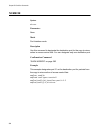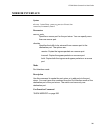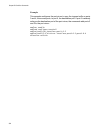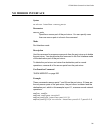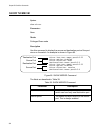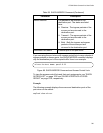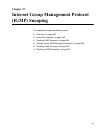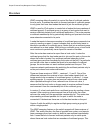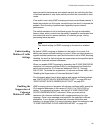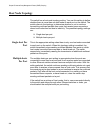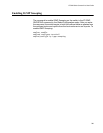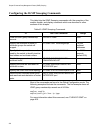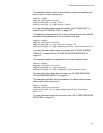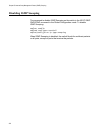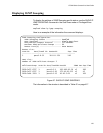
Chapter 23: Internet Group Management Protocol (IGMP) Snooping
396
Overview
IGMP snooping allows the switch to control the flow of multicast packets
from its ports. It enables the switch to forward packets of multicast groups
to only ports that have host nodes that want to join the multicast groups.
IGMP is used by IPv4 routers to create lists of nodes that are members of
multicast groups. (A multicast group is a group of end nodes that want to
receive multicast packets from a multicast application.) The router creates
a multicast membership list by periodically sending out queries to the local
area networks connected to its ports.
A node that wants to become a member of a multicast group responds to a
query by sending a report. A report indicates that an end node wants to
become a member of a multicast group. Nodes that join a multicast group
are referred to as host nodes. After joining a multicast group, a host node
must continue to periodically issue reports to remain a member.
After the router has received a report from a host node, it notes the
multicast group that the host node wants to join and the port on the router
where the node is located. Any multicast packets belonging to that
multicast group are then forwarded by the router out the port. If a particular
port on the router has no nodes that want to be members of multicast
groups, the router does not send multicast packets out the port. This
improves network performance by restricting the multicast packets only to
router ports where host nodes are located.
There are three versions of IGMP— versions 1, 2, and 3. One of the
differences between the versions is how a host node signals that it no
longer wants to be a member of a multicast group. In version 1, it stops
sending reports. If a router does not receive a report from a host node
after a predefined length of time, referred to as a time-out value, it
assumes that the host node no longer wants to receive multicast frames
and removes it from the membership list of the multicast group.
In version 2, a host node exits from a multicast group by sending a leave
request. After receiving a leave request from a host node, the router
removes the node from the appropriate membership list. The router also
stops sending multicast packets out the port to which the node is
connected if it determines there are no further host nodes on the port.
Version 3 adds the ability to register multiple groups using a group list
within a single packet.
The IGMP snooping feature on the switch supports all three versions of
IGMP. The switch monitors the flow of queries from routers, and reports
leave messages from host nodes to build its own multicast membership
lists. It uses the lists to forward multicast packets only to switch ports
where there are host nodes that are members of multicast groups. This



